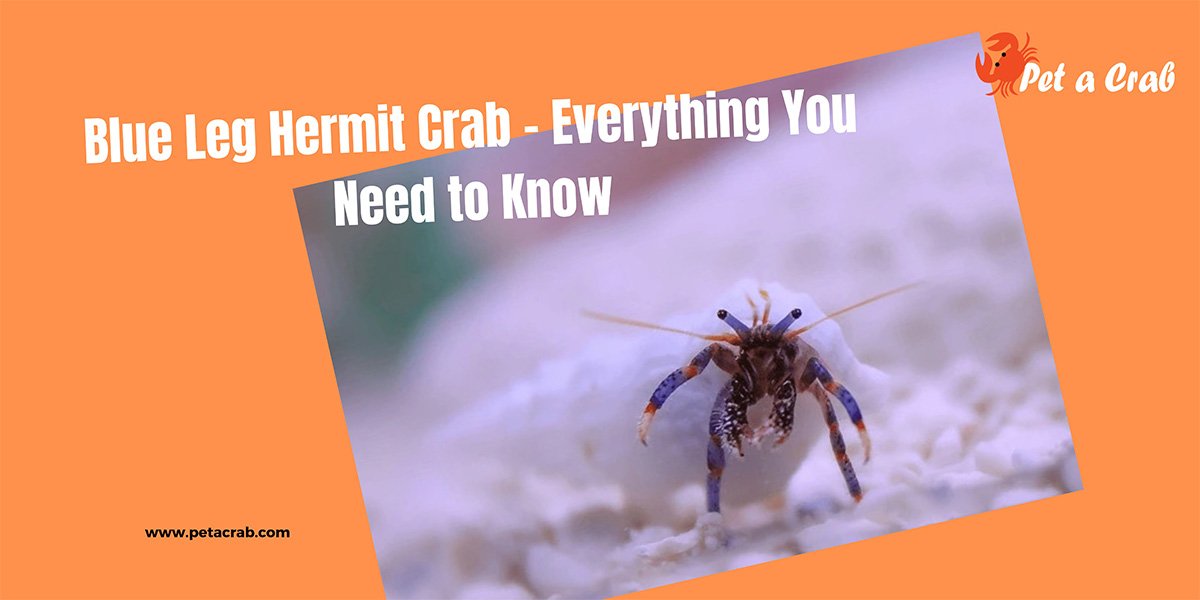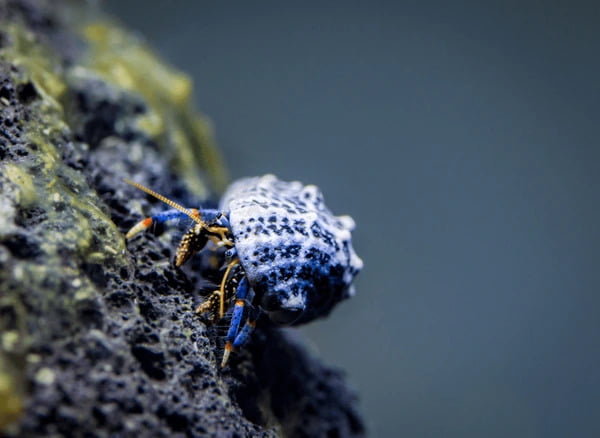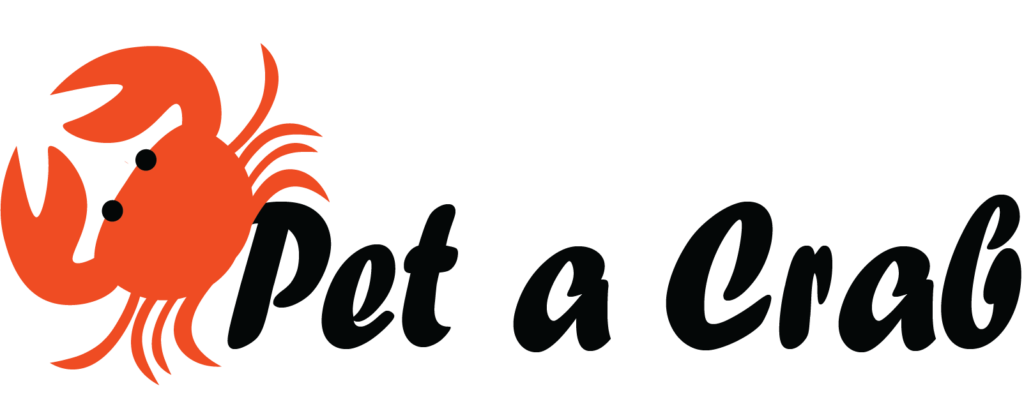Clibanarius tricolor also known as blue leg hermit crab is one of the hermit crab species among 800 hermit species. This is a popular marine invertebrate to aquarium enthusiasts known for its low-maintenance, blue and colorful appearance and its tank cleaning behavior. Like the other species of hermits, this crab also uses the leftover shells of a dead snail to protect their vulnerable abdomen from marine predators. Besides, they are fully aquatic and have a relationship with sea anemone-like the anemone hermit crab.

As they are marine, not terrestrial there are some specific things you should consider about blue-leg hermit crab care. Continue reading to learn everything you need to know about this crab.

Quick overview of red tip hermit crab
Name
The blue leg hermit crab is scientifically known as Clibanarius tricolor the common name being dwarf blue leg hermit crab, tricolor hermit crab, equal handed hermit crab, blue legged hermit crab, and blue leg reef hermit crab.
Habitat and origin
This crab is most commonly found in the shallow tropical waters of the Caribbean Sea and Western Atlantic as well as off the coasts of Florida, Mexico and the south coast of Curasao.
Temperament
The blue legged hermit crab can semi aggressive and sometimes can attack small snails to occupy the shell as this is their nature. As they grow they must have access to a variety of shells and providing all their needs will make them less aggressive.

Minimum Tank Size
A rule of thumb for blueleg hermit crabs is a minimum of 10 gallons for one or two crabs. If you want to add more you need to count one crab equal to 5 gallons (meaning 1 or 2=10 gallons and 3 or 4=15 or 20 gallons) as they become aggressive and stressed in overcrowded and small tanks.
Care Level:
They need very little care if you know the proper way like which shell they use temperature, feeding, etc. Proper care can give the crab a longer life than what they would get in captivity (hermit crabs cannot live their full lifespan in captivity).
- Breeding: They rarely breed in captivity but not impossible.
- Size: Can reach up to 2 cm (0.79 in) in size.
- Optimal Temperature: 21°C – 26°C (70°F – 80°F).
- Diet and sleeping nature: Omnivorous and nocturnal.
- Reef Safe: Yes
- Life Span: Up to 2 years in captivity.
- Color: They are attractive due to their distinctive black, white, blue, and orange color.
Interesting facts about blue-leg hermit crab
- They can fight to occupy the shell if they find another crab that has a nice shell that could be more comfortable compared to what they are wearing now.
- Two blue legged hermit crabs can be seen swapping shells mutually.
- They are very social as they like to stay in a group, so keeping more than one crab is preferable.
- They sleep and rest the whole day and become active at night as they are nocturnal.
- This is one of the few crabs which cause no harm to the reef.

Blue leg hermit crab care
Tank setup
Size– Average 20 to 25 gallons, lid is not necessary but preferable.
Substrate- You can use beach sand or play sand as the substrate. The substrate should be 2 to 3 inches deep so that they can burrow and hide while they are molting. You can use some small gravel on top of the substrate.
You shouldn’t use big rocks because they bury under the substrate and coming out of the sand and rock can be problematic. Don’t use calcium san, sharp wood, and sharp stone as they can scratch the crab.
Decoration and hiding places- You can add ornamental plants wood or hiding places anything you like. Just be sure they are safe.
Temperature and water parameters for blue leg hermit crab
The temperature should be around 21°C – 26°C (70°F – 80°F) ensure the tank has this temperature maintained, sudden changes or fluctuations in temperature may cause harm to their health.
dKH (Carbonate Hardness) should be between 8 and 12 and the pH should be between 8.1 and 8.4.
sg Specific Gravity (the density of water compared to pure water which indicates appropriate salinity level) needs to be between 1.023 and 1.025. If these parameters go a little bit high and low that won’t be a problem, they can adapt sometime after. (Saltwater needs to be prepared with reef salt)

Shell requirement
Blue leg hermit crab needs a shell after 15 to 20 days of their hatching. As they grow the body gets bigger and needs to move to a new shell. Without the shell, they won’t survive for long. So they need access to a variety of shells to move to the new one whenever they feel like it. Minimum 3 shells for each crab.
Light requirements
As blue legged crabs are nocturnal meaning they sleep during the day, they won’t need any light at night. However, if you want to track the movement at night as they become active at night, you should use a dark light (they won’t see the presence of light but you can see them). They need 12 hours of day and night cycle.
Diet for blue leg hermit crab
The blue leg hermit crabs are omnivorous scavengers meaning they can eat whatever they may find. For their small body, they won’t need an extra diet.
They can have the leftover food and feces of other tankmates, decayed plant matter, or meat. They are well known for cleaning the tank by eating phytoplankton (microalgae), zooplankton and other things that you would have to clean manually.
You should not think too much about their feeding but ensure they get balanced food with extra calcium which can help when they are molting. You can take them out in different containers and give some fruits vegetables and meats as treats once in a while.
Tank mates
The best tankmate for blue leg hermit crab is another blue leg then you can keep other animals you want but keep in mind they should be peaceful/non-aggressive and smaller in size (they will be afraid of bigger marine fish by thinking predators though the fish is nonaggressive). For example invertebrates, corals, and different kinds of fishes like mollies, guppies, zebra blennies, guppies, and tetras.


